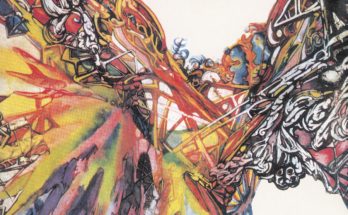By Rodrigo Díaz Guerrero
His mother was Gwendolyn Midlo Hall, a historian focused on slavery in the Caribbean, Latin America, Louisiana (U.S.), Africa, and the African diaspora in the Americas. She was author of the book “Africans in Colonial Louisiana: The Development of Afro-Creole Culture in the Eighteenth Century” (1992) and an emeritus professor of Latin American and Caribbean history at Rutgers University in New Jersey. She created the leading resource for historical and genealogical research on slavery—a database that identifies more than 100,000 enslaved Africans, among other important contributions. His father was Harry Haywood, a leader of the Communist Party of the United States (CPUSA), as well as the Communist Party of the Soviet Union (CPSU). He was a renowned political activist in his country of origin and a tireless promoter of self-determination for African-Americans, contributing to Marxist thought on the situation of African-Americans in the United States. He is the author of «Negro Liberation» (1948) and of the autobiography «Black Bolshevik» (1978).
Dr. Haywood Hall, as can be seen, comes from a lineage committed to social impact, equity, and, as the basis and origin of these philosophies, the common good—something that, inevitably, if we think about genetic inheritance and upbringing and if we think about his personal sensitivity and political conscience, has helped him make his own way in pursuit of helping his fellow men so that they, in turn, can help others. Dr. Hall found his destiny in the field of health and in his innate vocation to help change the social reality of those who need it.
He was born in Brooklyn, New York, but lived in Mexico until he was 8 years old. He then returned to the U.S., and later in life worked as a piano tuner and taxi driver in New York. «I also worked in the electricity commission for a few years, and one day I went to read the meters in a hospital, and outside the emergency room, I thought, ‘why didn’t I think of doing that?’ I was 22 years old. So, I went back to school, and everything turned out well, because medicine combined many things that I was interested in, a scientific part and a social part, a way of helping people and something that my parents hadn’t done either,” he said.
Dr. Hall is an emergency physician and member of Ashoka (an international non-profit organization that promotes social entrepreneurship). He completed residencies in internal medicine and emergency medicine at the University of New Mexico Health Sciences Center and is a member of the International Federation for Emergency Medicine, where he has served on various committees. Years later he returned to Mexico to create his biggest project: PACE.
RDG: Why return to Mexico again? What is the PACE project about and how did it originate?
HH: I think I was looking for something from my childhood. I thought that if I was in Texas, I would be closer to Mexico, and although that is true geographically, I realized that culturally it is very distinct. After five years of practice in the United States, doing many things in my career, I realized that I was not completely happy. I thought that something was missing, and I came to Mexico. On the way, there was an accident on the highway (in the state of Sonora), where one of the people had a trauma. It was serious, and when the Red Cross arrived, I realized that there was not much knowledge about it—what to do in an emergency situation. With the equipment that I had, I improvised a chest tube to save the life of one of the people affected.
That’s when I realized that I had knowledge in areas that can help people, and I thought I could do something in Mexico. Later I came to San Miguel to see a family member, and I saw a good place to start the project—a place to bring my team and start training, starting with San Miguel, because I saw a good connection with the United States in this place and all favorable conditions. We started working for five years with the Ministry of Health, helping them to form the emergency system for the state of Guanajuato. Then in 2002 we formed PACE, and it was a good time, because simultaneously medical students and residents of the U.S. began to arrive who wanted to help us with the projects and who also wanted to learn Spanish, so I started the MedSpanish program (language, culture, and global health), and this gave us resources to open a training center. Then we added various endorsements that are internationally recognized—courses in obstetric and trauma emergencies, various things. We have trained 41,000 people, 21,000 in obstetric emergencies in a course that is already a national standard (ALSO course). We have trained midwives in Chiapas and in various states of the nation. We have also done other projects, such as the first public access defibrillator in Latin America, which is here in San Miguel de Allende, in the main garden, although there are already others, like in the library. And we have organized the Pan-American Forums for Attention to Medical Emergencies, among other successes of the team. (In the second part of this interview we talk about the future of medicine, technology, and society).
To be continued.




